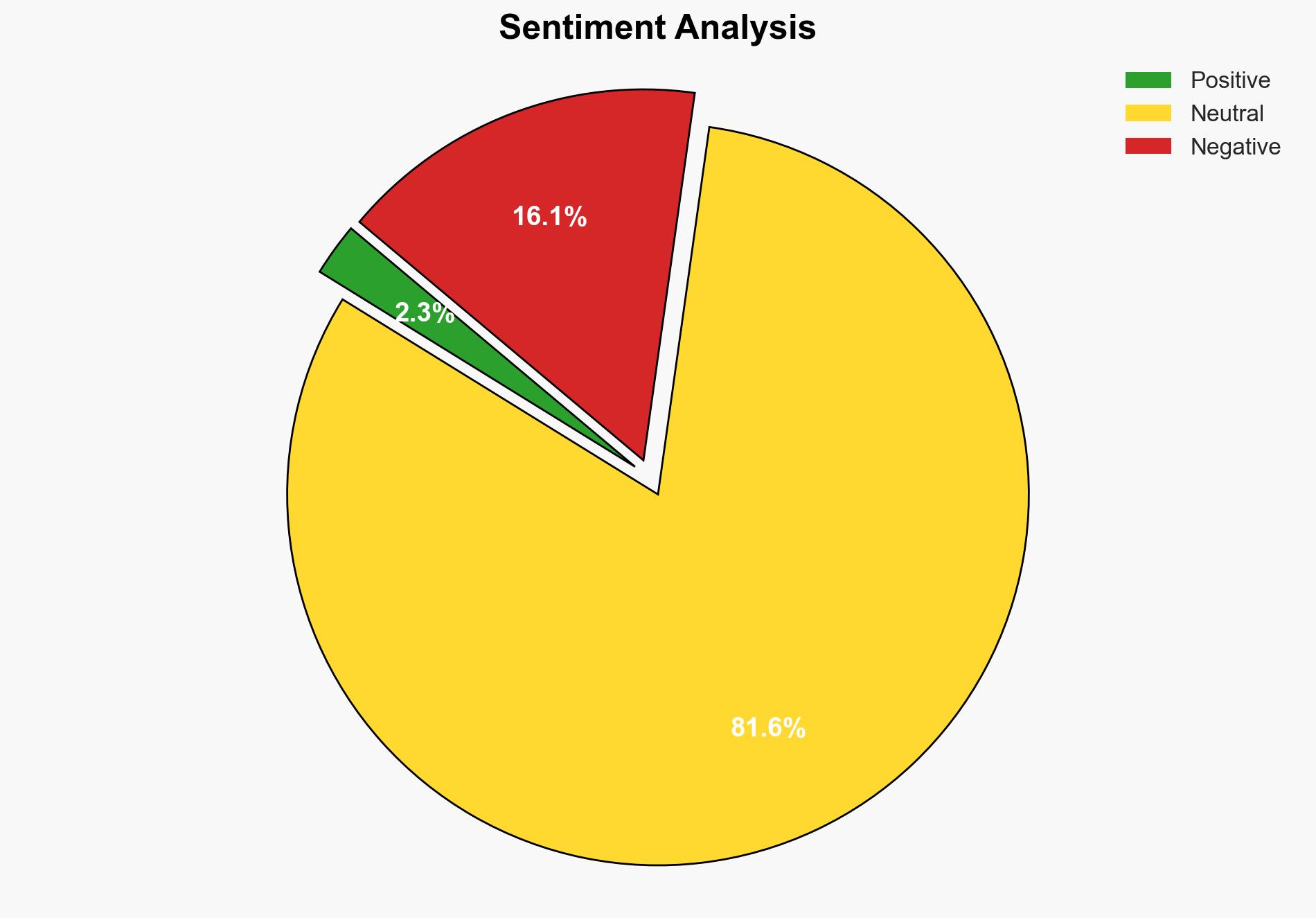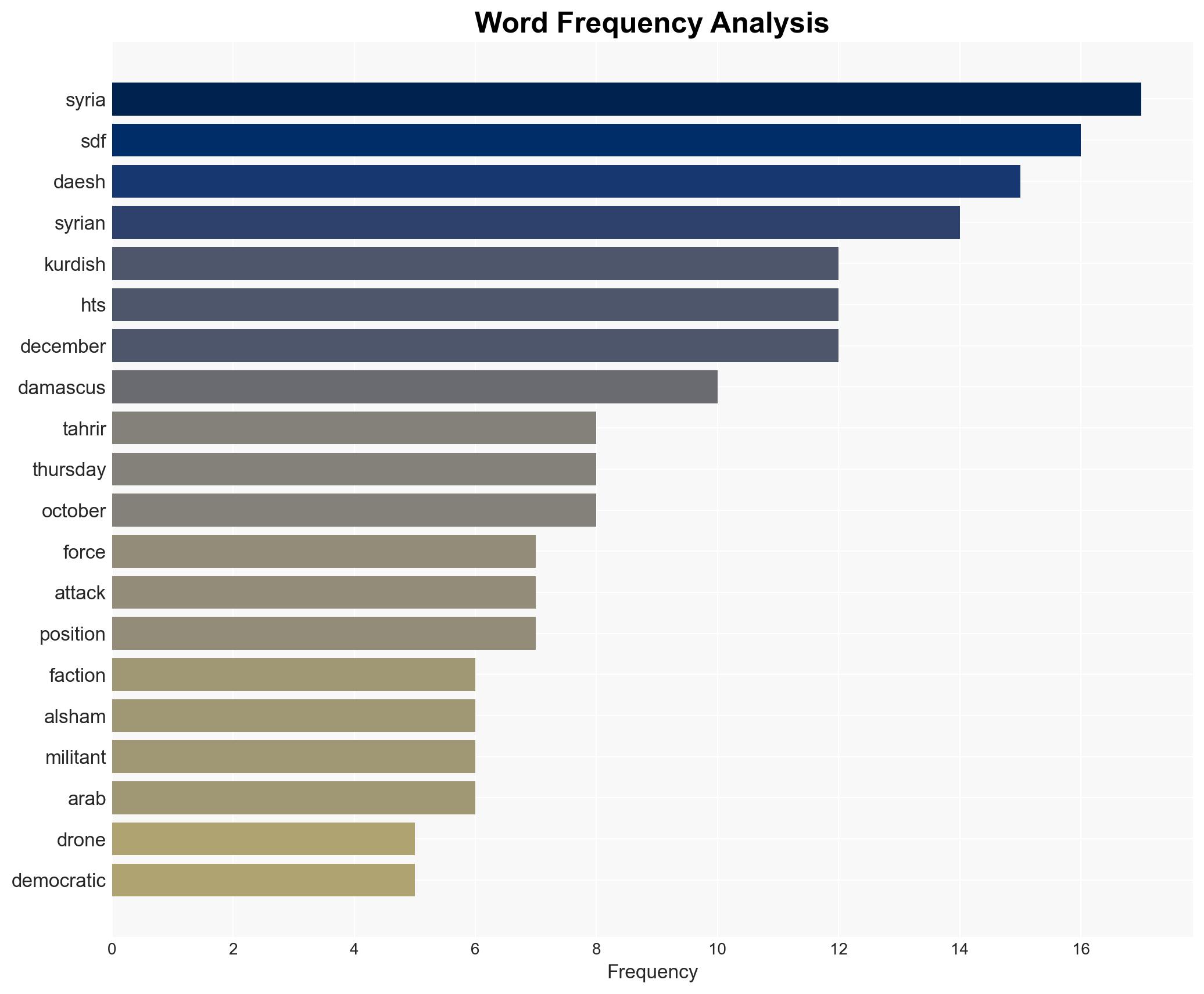Kurdish forces say HTS enabling Daesh drone strikes in northern Syria
Published on: 2025-11-22
AI-powered OSINT brief from verified open sources. Automated NLP signal extraction with human verification. See our Methodology and Why WorldWideWatchers.
Intelligence Report:
1. BLUF (Bottom Line Up Front)
The most supported hypothesis is that Hay’at Tahrir al-Sham (HTS) is indirectly facilitating Daesh drone strikes against the Syrian Democratic Forces (SDF) by providing operational support or turning a blind eye to Daesh activities in northern Syria. Confidence level: Moderate. Recommended action includes increased intelligence sharing and coordination between the SDF and international allies to monitor HTS activities and counter Daesh drone capabilities.
2. Competing Hypotheses
Hypothesis 1: HTS is actively enabling Daesh drone strikes against the SDF by providing logistical support, intelligence, or safe passage.
Hypothesis 2: HTS is not directly involved but is unable or unwilling to prevent Daesh from operating in areas under its control, leading to the perception of complicity.
Hypothesis 1 is more likely given the historical context of HTS’s opportunistic alliances and the strategic benefit of weakening the SDF, a rival faction. However, the lack of direct evidence of coordination introduces uncertainty.
3. Key Assumptions and Red Flags
Assumptions include the reliability of intelligence sources reporting HTS’s involvement and the assumption that HTS has the capability to control Daesh activities in its territory. Red flags include potential bias from sources with vested interests in discrediting HTS and the possibility of misinformation or propaganda from involved parties.
4. Implications and Strategic Risks
If HTS is facilitating Daesh operations, this could lead to increased instability in northern Syria, undermining SDF control and potentially drawing in further international military involvement. There is a risk of escalation into broader regional conflict, particularly if Syrian government forces or their allies perceive a threat to their interests.
5. Recommendations and Outlook
- Enhance surveillance and reconnaissance operations to gather more concrete evidence of HTS’s involvement with Daesh.
- Strengthen diplomatic efforts to pressure HTS to curtail Daesh activities in its territories.
- Most-likely scenario: Continued low-intensity conflict with sporadic drone attacks by Daesh.
- Best-case scenario: Successful diplomatic and military pressure leads to a reduction in Daesh operations.
- Worst-case scenario: Escalation into a broader conflict involving regional powers.
6. Key Individuals and Entities
Abu Mohammed al-Jolani (HTS leader), Syrian Democratic Forces (SDF), Hay’at Tahrir al-Sham (HTS), Daesh.
7. Thematic Tags
Regional Focus, Regional Focus: Northern Syria, Kurdish Forces, HTS, Daesh, SDF, Drone Warfare
Structured Analytic Techniques Applied
- Causal Layered Analysis (CLA): Analyze events across surface happenings, systems, worldviews, and myths.
- Cross-Impact Simulation: Model ripple effects across neighboring states, conflicts, or economic dependencies.
- Scenario Generation: Explore divergent futures under varying assumptions to identify plausible paths.
Explore more:
Regional Focus Briefs ·
Daily Summary ·
Support us





